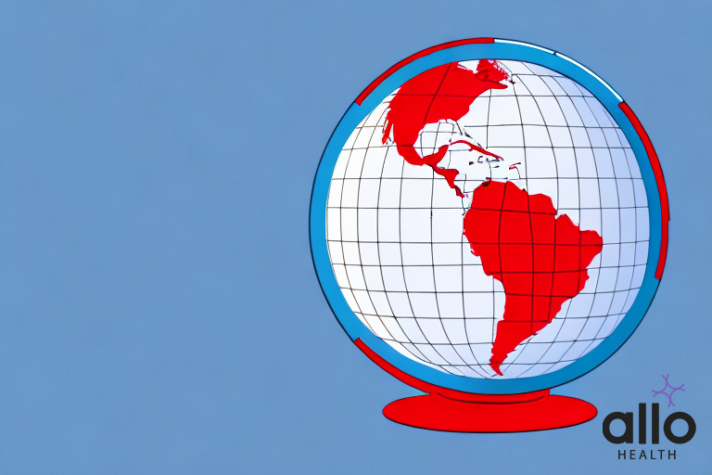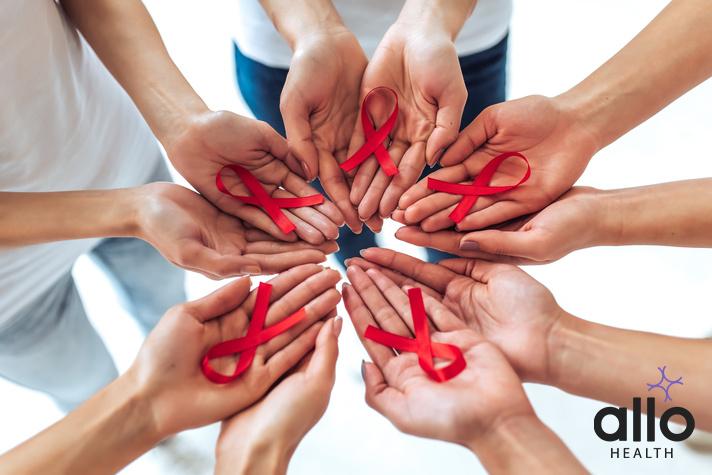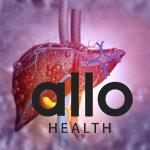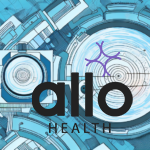Navigating Through History: The HIV Epidemic of the 1980s

"The following blog article provides general information and insights on various topics. However, it is important to note that the information presented is not intended as professional advice in any specific field or area. The content of this blog is for general educational and informational purposes only.
Book consultation
The content should not be interpreted as endorsement, recommendation, or guarantee of any product, service, or information mentioned. Readers are solely responsible for the decisions and actions they take based on the information provided in this blog. It is essential to exercise individual judgment, critical thinking, and personal responsibility when applying or implementing any information or suggestions discussed in the blog."
The 1980s marked a pivotal era in medical history with the emergence of the Human Immunodeficiency Virus (HIV) epidemic. This daunting public health crisis irrevocably altered the contours of global health, societal attitudes, and the trajectory of medical research. This article embarks on an explorative journey through the history, multifaceted challenges, and enduring impacts of the HIV epidemic during this tumultuous decade, shedding light on its lessons for future generations.
What is HIV?
The human immunodeficiency virus, or HIV, is a virus that attacks the immune system, specifically targeting CD4 cells (or T cells), which are crucial for the body’s defense mechanisms.
Transmission
- Bodily Fluids: HIV is transmitted through bodily fluids such as blood, semen, vaginal fluids, anal fluids, and breast milk.
- Common Modes of Transmission: The virus is most commonly spread through unprotected sex, sharing needles for drug use, and from mother to child during childbirth or breastfeeding.
Impact on the Immune System
- Destruction of CD4 Cells: Over time, HIV can destroy a significant number of CD4 cells, weakening the immune system and impairing its ability to fight off infections and diseases.
- Progression to AIDS: If left untreated, HIV can lead to acquired immunodeficiency syndrome (AIDS), a condition where the immune system is so severely damaged that it can no longer defend against certain cancers and infections, such as pneumonia.
Treatment and Management
- No Cure: Currently, there is no cure for HIV or AIDS, but treatment can manage the virus effectively.
- Antiretroviral Therapy (ART): People with HIV who start treatment early can live nearly as long as those without the virus, thanks to antiretroviral therapy, which suppresses the virus to undetectable levels.
- Prevention of Transmission: A study published in The Lancet in 2019 demonstrated that antiretroviral treatment is highly effective in preventing the spread of HIV, highlighting the importance of early detection and treatment.
Living with HIV
- Quality of Life: With the advent of effective treatment options, individuals living with HIV can maintain a high quality of life.
- Preventive Measures: Safe sex practices, using clean needles, and other preventive measures can significantly reduce the risk of HIV transmission.
- Community Support and Resources: Support from healthcare providers, community groups, and access to resources can help individuals navigate the challenges of living with HIV.
Understanding HIV and its effects on the body underscores the importance of prevention, early detection, and treatment to manage the virus and maintain a healthy life.

The Early Days of the Epidemic
- Mysterious Beginnings: The initial cases of what would later be identified as AIDS presented as rare opportunistic infections and cancers in young, otherwise healthy gay men in the United States, baffling medical professionals and igniting a quest for answers.
- Global Recognition: As similar cases began to surface across diverse populations worldwide, it became evident that this was not an isolated issue but a global health emergency.
Public Response and Stigma
- Fear and Discrimination: The early years of the epidemic were characterized by intense fear and widespread discrimination. Individuals diagnosed with HIV/AIDS faced ostracization, not just from society at large but often from their immediate communities and families.
- Media Sensationalism: Sensationalist media coverage further fueled misunderstandings about the virus, exacerbating stigma and hampering early prevention efforts.
Scientific Breakthroughs and Challenges
- Discovery of HIV: In 1983, scientists Luc Montagnier and Robert Gallo independently discovered the virus responsible for AIDS, later named HIV. This discovery was a critical turning point, laying the groundwork for future research and the development of diagnostic tests.
- The Quest for Treatment: Despite significant advancements in understanding HIV, the development of effective treatments lagged. The decade was marked by a desperate search for antiretroviral drugs that could manage the virus, a journey fraught with scientific, ethical, and funding challenges.
Activism and Change
- Rise of Advocacy Groups: Faced with governmental indifference and societal stigma, advocacy groups like ACT UP and the Gay Men’s Health Crisis emerged, demanding better research, treatment options, and policies to combat the epidemic.
- Policy and Perception Shifts: These movements were instrumental in changing public perceptions about HIV/AIDS, influencing policy, and securing increased funding for research and treatment, showcasing the power of community-led activism.
Legacy and Lessons Learned
- A Catalyst for Change: The HIV epidemic of the 1980s served as a catalyst for significant changes in public health policy, research priorities, and the way societies address health crises.
- The Importance of Unity: It underscored the critical need for compassion, understanding, and global collaboration in health emergencies, lessons that remain pertinent as we face new and ongoing global health challenges.
Tracing the Arc of HIV/AIDS: From Emergence to Present Challenges
The history of HIV/AIDS, from its emergence in the United States during the late 1970s and early 1980s to the present, encompasses a complex interplay of medical, social, and political factors. This narrative highlights not only the tragic impact of the disease but also the remarkable mobilization of communities, activists, and healthcare professionals that led to significant advancements in its treatment and understanding. Below, the main points are expanded with additional details to provide a more comprehensive overview.
Origins and Silent Spread
- Early 20th Century: The cross-species transmission of Simian Immunodeficiency Virus from chimpanzees to humans in Central Africa, leading to the first cases of HIV-1.
- 1959: Recognition of the earliest confirmed HIV-related death in the Congo.
- 1960s: Emergence of HIV-2 from monkeys in West Africa and introduction of HIV-1 to the Americas.
- 1977: Death of Danish physician Grethe Rask, later confirmed to have been infected with HIV.
A Gay Men’s Crisis
- 1980-1981: Initial identification of unusual illnesses among gay men, marking the beginning of the AIDS crisis.
- June 5, 1981: The CDC’s first official report on the emerging disease among gay men in Los Angeles.
- August 11, 1981: Larry Kramer’s fundraising for AIDS research, highlighting the community’s early efforts to combat the epidemic.
Awareness Spreads, Misconceptions Linger
- 1982-1983: The naming of AIDS and the identification of its wider impact beyond the gay community.
- 1983: Establishment of Ward 86, the world’s first outpatient clinic for AIDS, introducing the San Francisco Model of Care.
- 1984: Misinterpretation of the “Patient Zero” story and announcement of the HTLV-III virus as the cause of AIDS.
A Public Health Crisis
- 1985-1986: Increased visibility and urgency of the AIDS epidemic, marked by celebrity diagnoses and significant public health announcements.
- 1985: FDA licensing of the first blood test for HIV, improving blood supply safety.
- 1986: The official naming of the Human Immunodeficiency Virus (HIV).
Activism and Mobilization
- Late 1980s: The formation of activist groups like ACT UP, led to increased awareness and governmental action.
- 1987: Introduction of the AIDS Memorial Quilt, symbolizing the personal and societal toll of the epidemic.
Advances in Treatment and Ongoing Challenges
- 1990s: Introduction of antiretroviral therapy, significantly improving life expectancy for those living with HIV/AIDS.
- 2000s-Present: Continued efforts to reduce HIV/AIDS stigma, increase access to treatment worldwide, and advance towards a cure, despite the absence of a complete cure to date.
Global Perspective
- 21st Century: Despite advancements, HIV/AIDS remains a significant global health issue, with millions of people living with HIV worldwide.
- 2019: Reports of 1.7 million new HIV infections, underscoring the ongoing challenge of prevention and treatment on a global scale.
The journey from the first recognition of HIV/AIDS to its current status reflects a remarkable arc of crisis, community activism, medical advancement, and ongoing challenges. The collective response to HIV/AIDS has not only shaped the course of the epidemic but also transformed aspects of medical research, public health policy, and community advocacy.
The Evolution of the HIV/AIDS Epidemic: Key Milestones and Ongoing Challenges
Certainly, adding subpoints to the overview you provided can help detail the multifaceted nature of the HIV/AIDS epidemic. Here’s a more structured breakdown with subpoints for clarity:
- Origins and Misunderstandings
No clear cause was identified; the first recorded case was in 1959.
Initial belief that HIV/AIDS exclusively affected young gay men.
- CDC’s Response
Formation of Task Force in 1981 to address Kaposi’s Sarcoma and Opportunistic Infections (KS/OI).
- Epidemic’s Spread
AIDS surfaced possibly as early as the 1930s, with a devastating impact through the 1980s and 1990s.
Over 70 million people have been infected worldwide, with approximately 35 million deaths.
- The 1920s-1950s
Early outbreaks of Pneumocystis pneumonia in Europe, with speculation about the origins of HIV.
- The 1960s
At least two cases of HIV in the U.S., both in children from blood transfusions.
- The 1970s
The emergence of rare diseases like Kaposi’s sarcoma lays the groundwork for the AIDS crisis.
- The 1980s AIDS Crisis
June 1981: CDC report on young gay men with KS/OI.
September 1982: “AIDS” was officially coined by the CDC.
Mid-1980s: WHO’s global AIDS crisis assessment, recognition of various transmission routes.
1985: Introduction of antibody blood tests.
1988: First World AIDS Day observed.
- The 1990s and Beyond
1996: Introduction of effective antiretroviral treatment at the International AIDS Conference.
Establishment of UNAIDS by the United Nations.
Decline in AIDS death rate in 1997.
Modern Developments and Continuing Challenges
- Advancements in Treatment
Improved antiretroviral drugs and HAART regimens.
Pre-exposure prophylaxis (PrEP) and post-exposure prophylaxis (PEP).
U=U campaign highlighting that undetectable viral loads prevent transmission.
- Ongoing Issues
Stigma and disparities in access to care.
High cost of medications.
A significant portion of HIV-positive individuals were unaware of their status.
Specific Aspects and Impact
- What Was AIDS Called in 1981?
Initially termed “Gay-Related Immune Deficiency” (GRID).
- Who Was Most Affected in the 80s?
Early on, perceived as a ‘white gay disease’; its disproportionate impact on African Americans was recognized mid-decade.
- Impact on the San Francisco Gay Men’s Chorus
Provided support and raised awareness within the community.
Created the Fifth Section to honor members lost to HIV/AIDS.
The Present: HIV Epidemic’s Current State
- Challenges Remain
Stigma, homophobia, and lack of public awareness continue to hinder progress.
Socioeconomic status and access to healthcare play significant roles in the epidemic’s impact.
- Stigma and Societal Attitudes
The stigma around HIV/AIDS contributes to the spread and hampers efforts to combat the epidemic effectively.
This structured breakdown with subpoints offers a more detailed view of the complex history and ongoing challenges of the HIV/AIDS epidemic, highlighting key events, developments, and the multifaceted response to this global health crisis.
Conclusion
The HIV epidemic of the 1980s was more than a public health crisis; it was a historic event that tested the resilience, compassion, and ingenuity of the global community. It taught invaluable lessons about scientific research’s importance, advocacy’s power, and the necessity of confronting health challenges with unity and empathy. As we continue to navigate the complexities of modern health crises, the lessons learned from the 1980s HIV epidemic offer a blueprint for a more informed, compassionate, and unified approach to global health.
In memory of those we’ve lost and in support of those living with HIV/AIDS today, we must continue to educate, advocate, and support research. Let us commit to a future where HIV/AIDS is a chapter of our past, not a threat to our future. Together, we can strive for a world free of HIV/AIDS, informed by the lessons of the past, and united in our efforts for a healthier tomorrow.
Most Asked Questions
-
What caused the HIV epidemic in the 1980s?
The HIV epidemic in the 1980s was caused by the spread of the Human Immunodeficiency Virus (HIV), primarily through unprotected sexual intercourse, sharing needles for drug use, and from mother to child during childbirth or breastfeeding. The lack of awareness and understanding of the virus contributed to its rapid spread.
-
How was HIV/AIDS initially perceived in the early 1980s?
In the early 1980s, HIV/AIDS was initially perceived as a disease that only affected young gay men, leading to it being mistakenly labeled as "Gay-Related Immune Deficiency" (GRID). This misconception contributed to stigma and delayed response efforts for broader populations.
-
What were the significant milestones in responding to the HIV epidemic during the 1980s?
Significant milestones included: The formation of the CDC Task Force in 1981 to address Kaposi's Sarcoma and Opportunistic Infections (KS/OI). The official naming of AIDS in September 1982. The discovery of HIV by scientists Luc Montagnier and Robert Gallo in 1983. The introduction of the first antibody blood tests in 1985. The observation of the first World AIDS Day in 1988.
-
Why was there so much stigma surrounding HIV/AIDS during the 1980s?
Stigma was largely due to misconceptions about the virus being solely a "gay disease," as well as fear and misunderstanding about its modes of transmission. Sensationalist media coverage and the lack of effective treatments further fueled discrimination against those infected.
-
How has the understanding and treatment of HIV/AIDS evolved since the 1980s?
Since the 1980s, significant advancements have been made in the understanding and treatment of HIV/AIDS. Antiretroviral Therapy (ART) was introduced, transforming HIV from a fatal diagnosis to a manageable chronic condition. Public awareness campaigns and global initiatives like UNAIDS have worked to reduce stigma and improve access to treatment. The introduction of Pre-exposure prophylaxis (PrEP) and the U=U campaign (Undetectable = Untransmittable) have further revolutionized HIV prevention and treatment strategies.







































